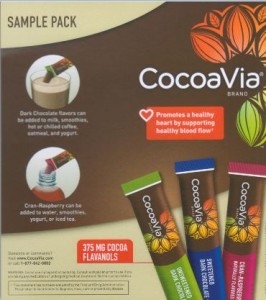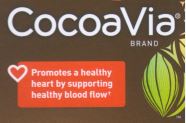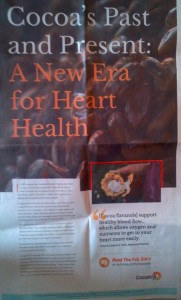Healthy? Natural? It’s up to the FDA.
The terms “healthy” and “natural” help to sell food products. They are about marketing, not health.
This makes life difficult for the FDA, which has the unenviable job of defining what the terms mean on food labels.

In a victory for the maker of KIND bars, the FDA has just said that the bars can be advertised as healthy—and that the agency will be revisiting its long-standing definition of the term. This is what that definition says now:
You may use the term “healthy” or related terms as an implied nutrient content claim on the label or in labeling of a food that is useful in creating a diet that is consistent with dietary recommendations if the food meets the conditions for total fat, saturated fat, cholesterol, and other nutrients…In addition, the food must comply with definitions and declaration requirements for any specific NCCs [Nutrient Content Claims].
The chronology :
- March 2015: FDA issues a warning letter to KIND stating that product labels make nutrient content claims without meeting the requirements for making such claims.
- December 1, 2015: KIND files citizen petition asking FDA to permit use of “healthy” because nuts, even though higher in fat than FDA permits, are healthy.
- April 20, 2016: FDA says KIND products now meet labeling requirements
- May 10, 2016: KIND announces that the FDA has reversed its stance and will allow it to use “healthy.”
As reported by Food-Navigator-USA (in a remarkably thorough account of these events),
Dr. Susan Mayne, Director of the Center for Food Safety and Applied Nutrition at the FDA, said: We do not object to the specific statement that you would like to place on your bar wrappers, on the condition that there will be no other nutrition-related statement, such as express or implied nutrient content claims, on the same panel of the label…We agree with you that our regulations concerning nutrient content claims are due for a reevaluation in light of evolving nutrition research.”
What this sounds like is that FDA will be soliciting comments on the meaning of “healthy.” It also sounds like the FDA agrees that fat is not an appropriate criterion. But will the FDA set a limit on sugars? KIND bars are sweetened.
This looks like the FDA will request comments as the start of its interminable rulemaking process.
In the meantime, here’s the Wall Street Journal’s video explanation of the absurdity of the current rules.
Natural
The FDA is further along in that process for “Natural.“ The comment period closed and Politico Pro Morning Agriculture reports that more than 5000 came in. These have not yet been posted, but Morning Ag has some. It says opinions vary. Widely.
- FDA should prohibit using the term.
- Acceptable post-harvest processing and production methods [including GMOs]
- No chemicals, no additives, and no kitchen chemistry
- Some forms of processing can be used – and indeed may be necessary.
- ‘Natural’ means that this product contains no artificial or synthetic ingredients.
I’ve commented many times in the past on the ongoing debates about “natural.”
I repeat: When it comes to food labels, “healthy” and “natural” are marketing terms. Their purpose is to sell food products.
Caveat emptor.









